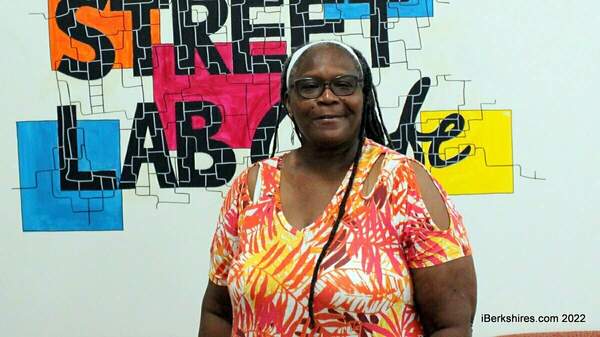
Mount Greylock Building Project Hires Procurer for Fixtures, Technology
WILLIAMSTOWN, Mass. — The Mount Greylock Regional School Building Committee recently agreed to hire a consultant to help purchase furniture, equipment and technology for the new academic wing and to use an umbrella insurance policy to cover all work during the project's remaining two years.
The committee voted 8-0-1 to accept a proposal from Point Line Space of Carlisle to manage the procurement and installation of furniture and technology for a cost of $70,400.
The firm will be responsible for working with the project's designers at Perkins Eastman in Cambridge to determine what is needed and what will make optimal use of the new space, managing the acquisition of all materials through the commonwealth's Chapter 30B procurement process and coordinating the delivery and installation of materials from various vendors.
At the end of the process, the eastern Mass-based consultant will "confirm conformance and performance according to contracts — confirm quantities, locations, inspect for damages, etc. … [and make] recommendations to the owner for payment — based on the vendors' completion of contract," according to the proposal submitted by Point Line Space.
A couple members of the committee expressed concerns that it was making a choice without having the time to explore alternatives, including, perhaps hiring PLS or a similar firm for some of the work involved while keeping the rest "in house."
"I just want to be cautious about it and not rush into it so people have an opportunity to look at what the potential cost cutting could mean," said Thomas Bartels, who noted that items may be cut from the project to make up for the expenditure. "I'm not against this proposal. I want to make sure we all understand what the potential consequences would be."
For now, the consultant will be paid not by cutting items but by dipping into the owner's contingency account. That said, it is still early in the building project, and once the contingency account is exhausted, the SBC will need to start trimming items on its "value engineering" list.
Bartels ended up abstaining from the vote to accept the PLS proposal, which amounts to about 5 percent of the $1.3 million budget for furniture, fixtures, equipment and technology.
The rest of the committee appeared to be swayed by the argument that outside expertise was needed to avoid drains on the district's staff.
When committee member Robert Ericson suggested that school districts like Mount Greylock routinely purchase "furniture and stuff like this" and could handle the load itself, Principal Mary MacDonald, a voting member of the SBC, disagreed.
"In the last five years, since I've been here, there has been very little purchased," she said in a meeting telecast on Williamstown's community access television station, WilliNet. "We've taken advantage of hand-me-downs from Williams College. … Chairs, shelving, file cabinets have been hand-me-downs.
"To do this in-house, significant training would be required."
Mount Greylock Superintendent Douglas Dias told the rest of the committee that if it did not go with PLS, the district would end up having to hire someone part time to take on the administrative burden of the procurement and hope it could find someone qualified and committed for the duration of the project.
"Seventy thousand dollars, while it is a big hit, is an investment in the future," Dias said.
Trip Elmore of owner's project manager Dore and Whittier told the committee that the project's budget assumed no expenditure for outside consultants in the acquisition process.
"There are many districts that do it themselves," he said. "There are many districts that might say they want help with a portion of the process. But it is very time-consuming."
MacDonald argued that outfitting all of the classrooms and labs in the three-story academic wing is not the kind of project that could be absorbed by current staff.
"It's a fairly big project," she said. "And I don't think we have the capacity in our current staff to do that comprehensively."
After a lengthy discussion, the committee voted to authorize Perkins Eastman to hire Point Line Source and add the expenditure to the district's contract with the design firm.
The committee also heard a presentation from its other major partner on the project, construction management firm Turner Construction, about its contractors' controlled insurance program.
CCIP is a combination of general liability and workers compensation coverage that covers the entire project, Turner's Susan Hughes explained to the committee.
Turner's representatives told the SBC there are a number of advantages to the as-yet-unwritten policy, which could cost up to $2 million.
One thing the construction management firm explained is that premium is not an added expense to the project. Rather, by offering CCIP, Turner will require subcontractors not to carry insurance costs in their bids for work on the project — in other words, the district would have ended up paying for the insurance anyway, just in a piecemeal manner, under a traditional insurance approach.
"[Insurance] is going to be a pass-through cost," Elmore told the committee. "[CCIP] is an option they would like to use, so they're explaining it to us because they would like to enroll this project in a CCIP instead of traditional insurance."
Hughes told the committee that CCIP puts all potential subcontractors on a "level playing field." Instead of penalizing relatively small subcontractors who do not have the economies of scale to get better rates from insurance carriers, CCIP takes the insurance piece off the table when subcontractors are writing bids.
Turner has done more than 1,200 projects under the CCIP model, amounting to more than $60 billion worth of insurance coverage, Hughes said. Locally, the CCIP model was used on the Turner-managed expansion and renovation of the Clark Art Institute. In terms of public school projects in Massachusetts, the CCIP model was used on the project at Concord-Carlisle Regional High School.
In addition to using economies of scale to control insurance cost, the CCIP model is more hassle free for the district when claims arise, the committee was told.
"If [the district] gets pulled into a [project-related] lawsuit that for some reason we don't, you're still covered," Turner's Mike Ziobrowski told the School Building Committee. "And with traditional insurance, if a trade's insurance limit doesn't have enough to support the claim, they come after us. That takes time and money away from the project.
"Anyone doing onsite work would be included in CCIP."
Once again, members of the board, including Bartels expressed concern about making a decision on the move at the first meeting where it was discussed. But Elmore and the Turner representatives told the committee that the district needed to move on the on the issue in order to lock in favorable rates and have the CCIP policy in place when bids are issued in January.
"There's time pressure to make a decision tonight," Elmore said.
The committee members present voted 7-1-1 to pursue the CCIP policy with Bartels voting nay and Ericson abstaining.
In other business on Thursday, Ericson and Jesse Wirtes volunteered to serve on the subcontractor review committee that will prequalify bidders from anywhere from 80 to 150 who are expected to apply for the right to bid on jobs in the project.
"We will literally get going with starting requests for qualifications next week," Elmore said. "If we have five people [on the committee], and we get 125 submissions, everyone will get 25 submissions and fill out a ranking sheet. We'll get together in January and prequalify the subs. The day you have bid day, the low guy wins. You don't get to qualify them then You have to disqualify the ones you think will be bad guys [in advance]."
Tags: MGRHS school project,















